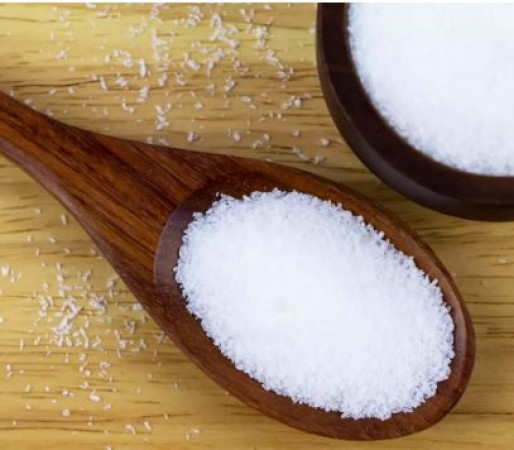
In today's culinary world, one of the most hotly debated topics is the use of Ajinomoto in our food. Ajinomoto, a flavor enhancer, has been a staple in many kitchens for decades. However, there have been persistent concerns about its safety, with some people claiming that it can lead to deadly diseases like cancer. In this article, we will delve into the versatile uses of Ajinomoto and explore the scientific evidence regarding its health implications. Let's separate fact from fiction when it comes to this controversial ingredient.
Ajinomoto, also known as monosodium glutamate (MSG), is a common food additive used to enhance the savory flavor of dishes. It is a sodium salt of glutamic acid, an amino acid found naturally in many foods. Ajinomoto is known for its ability to amplify the umami taste, making dishes more delicious and satisfying.
Ajinomoto is an integral part of various cuisines around the world. Its primary role is to enhance the flavor of a wide range of dishes, and it is commonly used in:
Soups and Broths: In Asian cuisine, Ajinomoto is often used to elevate the taste of soups and broths, such as miso soup and ramen. It's the secret behind the depth of flavor in these comforting dishes. The umami sensation it adds is what keeps us coming back for more.
Stir-Fries: It is a key ingredient in stir-fry dishes, giving them a robust umami flavor. Whether it's a classic vegetable stir-fry or a flavorful chicken stir-fry, Ajinomoto is the magic touch that makes these dishes so enticing.
Chips and Snacks: Many packaged snacks like chips and crackers contain Ajinomoto to make them more addictive. It's the hidden ingredient that keeps you reaching for another chip. The savory burst it provides is irresistible.
Seasonings: It is used in seasoning mixes to make convenience foods more appealing. From instant noodles to spice blends, Ajinomoto contributes to the complex and delightful taste of these products.
Fast-Food Chains: Some fast-food establishments include Ajinomoto in their recipes to make their products more palatable. It's not uncommon for fast-food burgers, fries, and even fried chicken to contain a dash of Ajinomoto. This is what gives them that distinct, crave-worthy flavor.
Marinades: Ajinomoto is used in marinades for meat and seafood to boost their flavor. When you marinate your meat in a mixture that includes Ajinomoto, you'll notice that it becomes more tender and succulent. This is the result of the flavor enhancement it provides.
Breading: It's a secret ingredient in many breading recipes, enhancing the taste of fried chicken and other breaded dishes. The crispiness and savory taste of fried foods are often attributed to the presence of Ajinomoto in the breading.
Despite its widespread use, Ajinomoto has faced controversy, primarily centered around health concerns. Some individuals claim that Ajinomoto can lead to serious health issues, including cancer. However, it's essential to scrutinize these claims.
Numerous scientific studies have examined the safety of Ajinomoto, and most of them have found no conclusive evidence linking it to cancer or other deadly diseases. Regulatory agencies such as the FDA and WHO have deemed Ajinomoto safe for consumption when used within recommended limits.
Ajinomoto has been studied extensively, and no direct causal relationship between its consumption and the development of cancer has been established. The concerns about its safety often stem from anecdotal reports and misconceptions.
Some studies have even challenged the concept of "Chinese Restaurant Syndrome," which was once believed to be linked to MSG consumption. The symptoms that were thought to be associated with MSG, such as headaches and chest pain, have not been consistently replicated in scientific studies.
While the scientific consensus is that Ajinomoto is generally safe for most people, it's still wise to use it in moderation. Like any ingredient, excessive consumption may not be advisable. Here are some tips for incorporating Ajinomoto safely:
When buying packaged foods, check the labels for Ajinomoto or MSG. This will help you manage your intake. Awareness of its presence in certain products allows you to make informed choices.
Cooking at home allows you to control the amount of Ajinomoto used in your dishes, reducing the risk of excessive consumption. When you prepare meals from scratch, you can adjust the seasoning to your preference.
Some individuals may be more sensitive to Ajinomoto, and in rare cases, it can lead to symptoms like headaches or chest pain. If you experience adverse reactions, consider reducing or eliminating it from your diet. Being attuned to your body's response to different foods is essential for maintaining good health. Ajinomoto, despite the controversies surrounding it, is a versatile ingredient that has found its way into kitchens worldwide. While it is essential to be mindful of our dietary choices, the scientific consensus suggests that Ajinomoto is not directly linked to deadly diseases like cancer. Using it wisely and in moderation can enhance the flavors of your dishes without compromising your health. In the end, the key to a healthy diet is a balanced and varied intake of foods, including those that contain Ajinomoto. So, don't be afraid to enjoy your favorite umami-rich dishes in a mindful and responsible way.
World Polio Day 2023: The Date, Historical Relevance, Theme, and More
Sri Lanka: Wickremesinghe Undertakes First Cabinet Shuffle, Reassigns Health Minister's Role